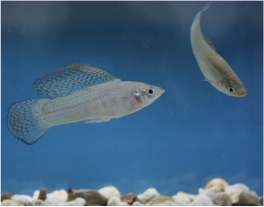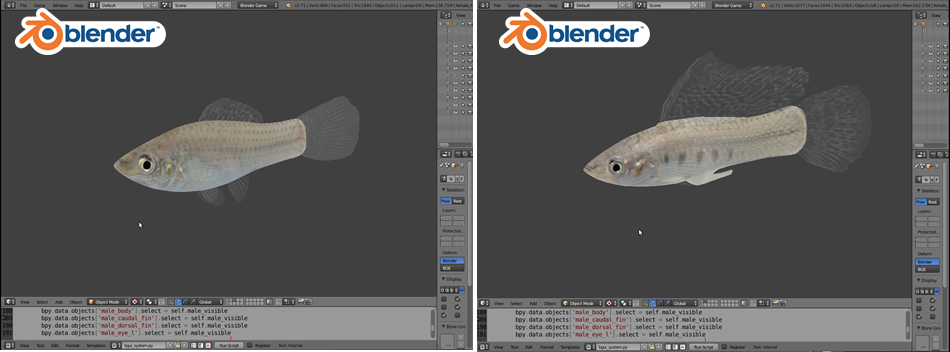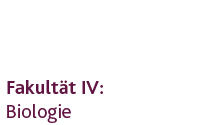Sailfin Molly
„Back to the roots of mate-choice copying“ – What is the relevant information to initiate mate-choice copying in the sailfin molly (Poecilia latipinna)?
The fundamental question when studying mate-choice in animals is that of the relevance of information provided by certain behaviors or visual traits. What exactly triggers the choice of a female fish for a certain male and vice versa? An interdisciplinary research group of biologists and computer scientists initiated a new project on virtual fish, funded by the DFG (Deutsche Forschungsgemeinschaft). The aim of this project is to get a closer understanding of mate-choice decisions with the main focus on mate-choice copying. The enormous changeability of virtual animal models makes it possible to alter information content in any order. Manipulating visual traits and behavioral patterns is a powerful tool to get further information on the critical characteristics of being an attractive mating partner. We here present the first steps in designing an animated photorealistic 3D fish model of a sailfin molly (Poeciliidae: Poecilia latipinna). Sailfin mollies were shown to copy the mate-choice of conspecifics, and therefore using a non-independent mating strategy based on social information. Perceptibility and acceptance of a first prototype 3D fish are currently tested in binary choice situations. In the future, the 3D fish is supposed to interact with live fish in real time.

Male (left) and female (right) sailfin mollies
Design of a virtual 3-D fish model
For design and modelling of the virtual 3-D fish we use the free and open-source program Blender (http://www.blender.org/ ) combined with the free and open-source Irrlicht Engine (http://irrlicht.sourceforge.net/ ) for animation of the fish models.
Thanks to custom made software applications („FishSimulator“, „FishCreator“, „FishPlayer“, based on ROS http://www.ros.org/ ), the virtual models “come to life” for their use in various behavioral experiments. At date, there is one female model and a male model that can be steered freely via gamepad and whose swimming movements can be shown in real-time or as recordings during experiments.
See the first video footage of a virtual fish prototype of a swimming male sailfin molly! http://youtu.be/sdlfum0G2G4

A new state of the art 3D tracking system could already be established and will be assisting in the evaluation of behavioral data. The tracking system provides data in real time and was specially designed for the use with aquaria, considering refraction, mirror-images and shadows.
See here a short video of the tracking system.


